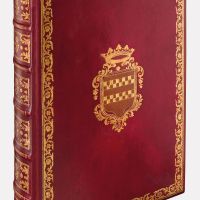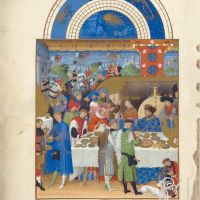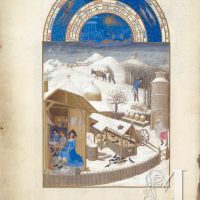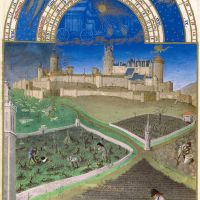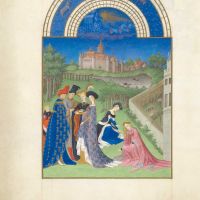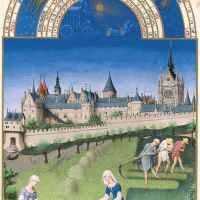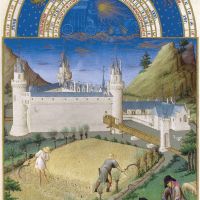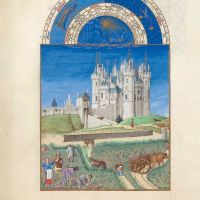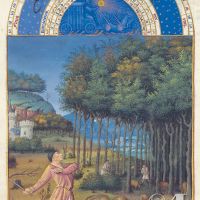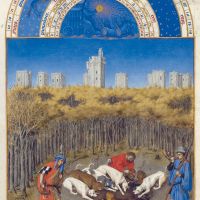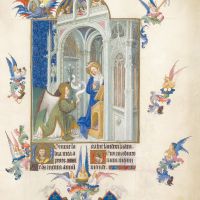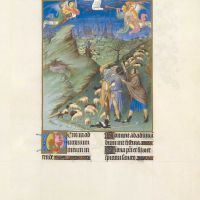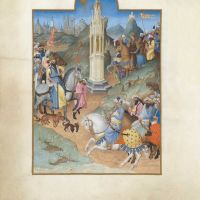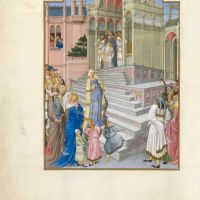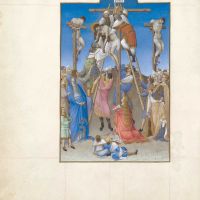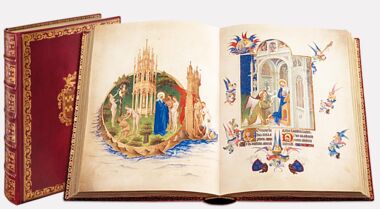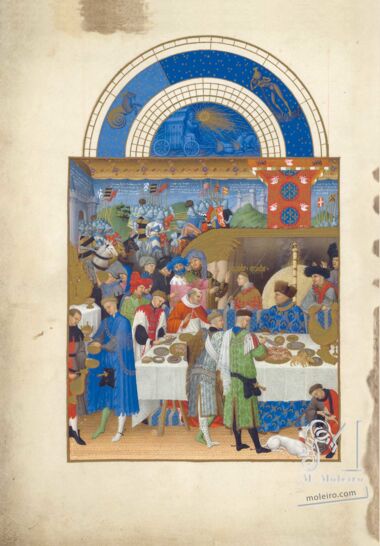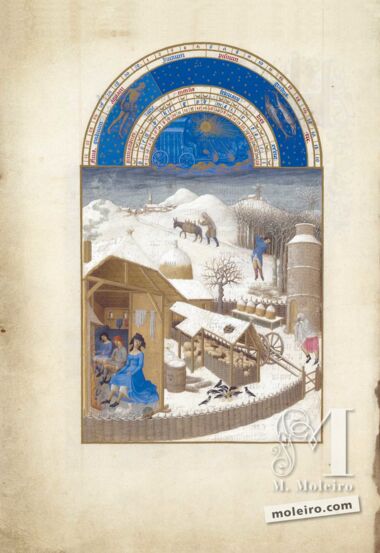The Très Riches Heures du Duc de Berry
Bibliothèque du Château de Chantilly
The only facsimile edition authorised by the "Bibliothèque du Château de Chantilly, Fondation pour la Sauvegarde et le Dévelopement du Domaine de Chantilly", exclusive owner of the Ms. 65 codex’s publication rights.
Shelf mark: Ms. 65.
Size: 21,3 x 29,2 cm.
416 pages, 130 miniatures and 3000 illuminated initials embossed with gold and silver.
Bound in red leather embossed with gilt border.
Commentary volume (65 pp.) by Inès Villela-Petit (Département des monnaies, médailles et antiques de la Bibliothèque nationale de France), and Patricia Stirnemann (Institut de recherche et d’histoire des textes).
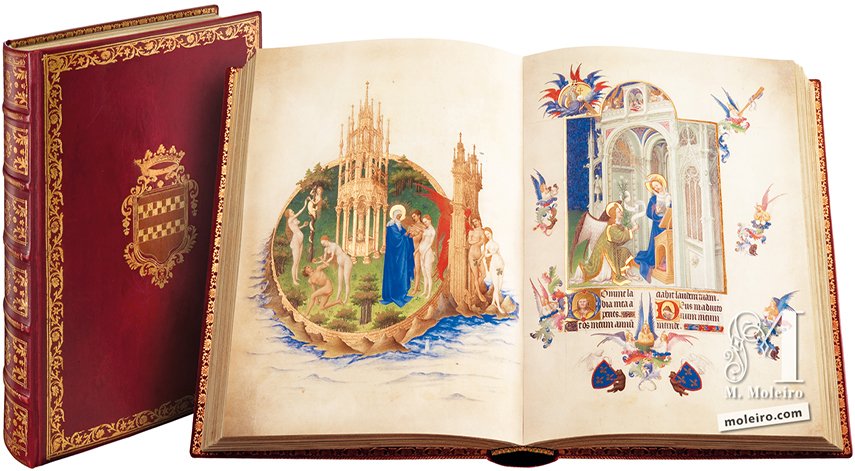
The only facsimile edition authorised by the "Bibliothèque du Château de Chantilly, Fondation pour la Sauvegarde et le Dévelopement du Domaine de Chantilly", exclusive owner of the Ms. 65 codex’s publication rights.
Shelf mark: Ms. 65.
Size: 21,3 x 29,2 cm.
416 pages, 130 miniatures and 3000 illuminated initials embossed with gold and silver.
Bound in red leather embossed with gilt border.
Commentary volume (65 pp.) by Inès Villela-Petit (Département des monnaies, médailles et antiques de la Bibliothèque nationale de France), and Patricia Stirnemann (Institut de recherche et d’histoire des textes).

